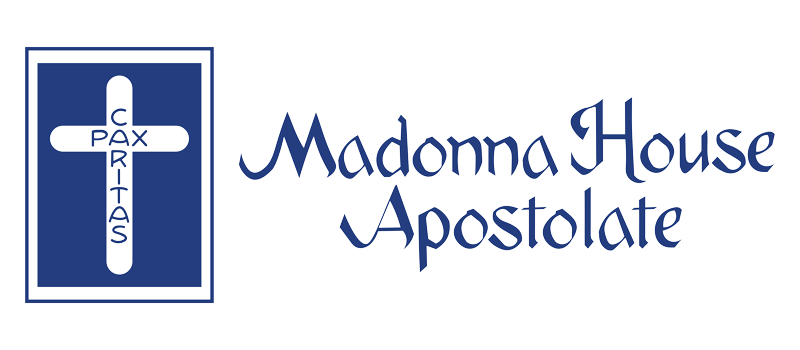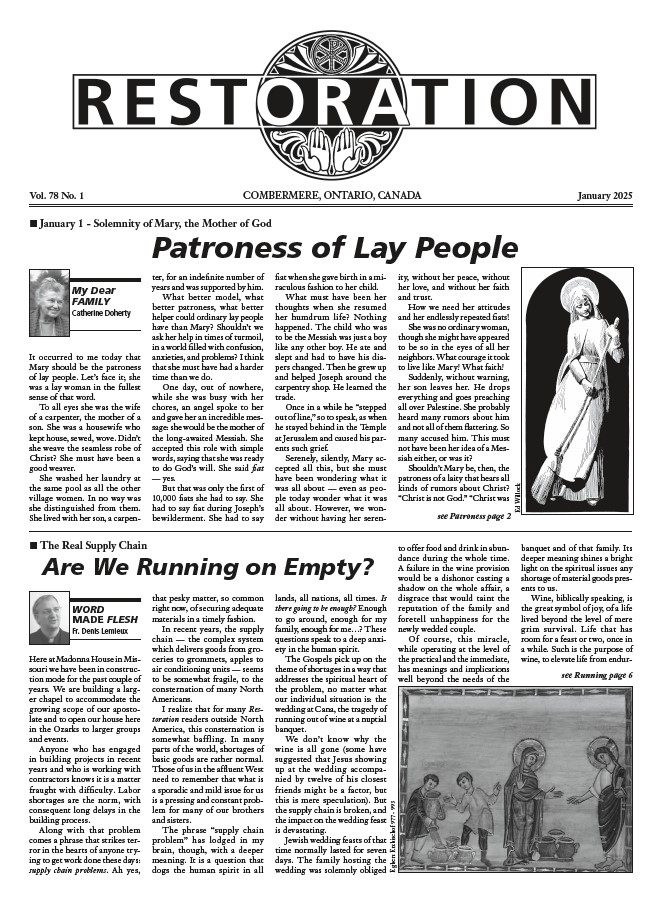This content has been archived. It may no longer be relevant
Last year, Marian Centre Regina had an unusual Advent-Christmas Season in more ways than one. Except for Hugo Isaza, who had stayed there the whole time, the other staff had been serving elsewhere for five months while the house was closed for major renovations. They all returned just before Advent.
***
When the renovations were finished, Christine Herlihy, Kate O’Donnell, and I, Charlie, returned to Regina in time to celebrate the Feast of Christ the King together. The following two weeks, with the help of very many volunteers, we cleaned, repainted, moved, and restocked food and other things in preparation for our December 11th re-opening.
Then the opening was like a small miracle unfolding—a welcoming “home” of both Brothers Christopher* and volunteers.
The weeks since then have been very full, but all the required work and other activity were covered by the expectant beauty of the Advent season and its liturgies.
On December 8th, we celebrated in our chapel with Bishop Jim Weisgerber, not only Our Lady’s Immaculate Conception, but also the fortieth anniversary of Kate’s first promises.
We also went out to proclaim the Good News in different ways. Hugo and Christine gave a presentation on our life of service to “the marginalized” to the diocesan lay formation participants. The next day I gave a talk at a parish on our way of life as a response to the gospel call to serve and honor Christ in all persons.
As Christmas came closer, we of course adorned our house with decorations. This year these decorations included beautiful flowers which someone gave us.
Hugo, according to the custom of his native Columbia, put up a nativity display, called the pesebre, a nativity scene surrounded by a village of small buildings, furniture, figurines, etc. This was a delight for our visitors, both young and old.
We, too, were delighted at the celebration at a friend’s house of another Colombian tradition—a novena ending on Christmas Eve. On that day, song, prayer and the sounds of cymbals and maracas were followed by much visiting and an exquisite chili-con-carne.
The fulfillment of Advent comes, of course, with the celebration of Christmas—Christ’s Incarnation.
An important part of our Christmas celebration here is the festive meal we offer at noon on Christmas Day to the Brothers Christopher and other poor who come to our soup kitchen. This year, 160 men, women and children came to receive the meal and to celebrate with us.
Benefactors, for weeks ahead, had generously brought the foods which make of this meal a real feast, and volunteers love to help serve this meal. The bishop of our diocese, Bishop Don Bolen, was one of them.
Moreover, carolling singers, accompanied by piano and trombone, brightened our hearts and all present with their song and sound.
This year, the meal unexpectedly took a dramatic turn. Shortly after it had begun, we welcomed Mel Ulmer, a regular and colorful patron here for very many years. It was wonderful to see him, to welcome him, and to see him smile. Moments later, we found him collapsed on the floor.
The carollers fell silent, a team of EMS (emergency medical service) staff tried to revive him, and all of us prayed for him. When the drama was complete, Mel had died, and our celebration was changed.
One of our brothers had departed this life before our eyes and, as we would later reflect, in a providential way. He could have easily died alone in his apartment but instead, he died in the company of friends and surrounded by prayer.
On the fifth day of Christmas, as we anticipated the coming New Year, we were reflecting that we had much to be grateful for. We were sitting in a warm building, which was sitting on new foundations and which had been cleaned and repainted with the help of many volunteers.
And we had resumed our privileged life of service that had been interrupted five months earlier. Our little community, which had been dispersed, was back together at home and once more we were welcoming all who come to us in need.
**Brothers Christopher: the homeless and other poor in whom we see Christ.





